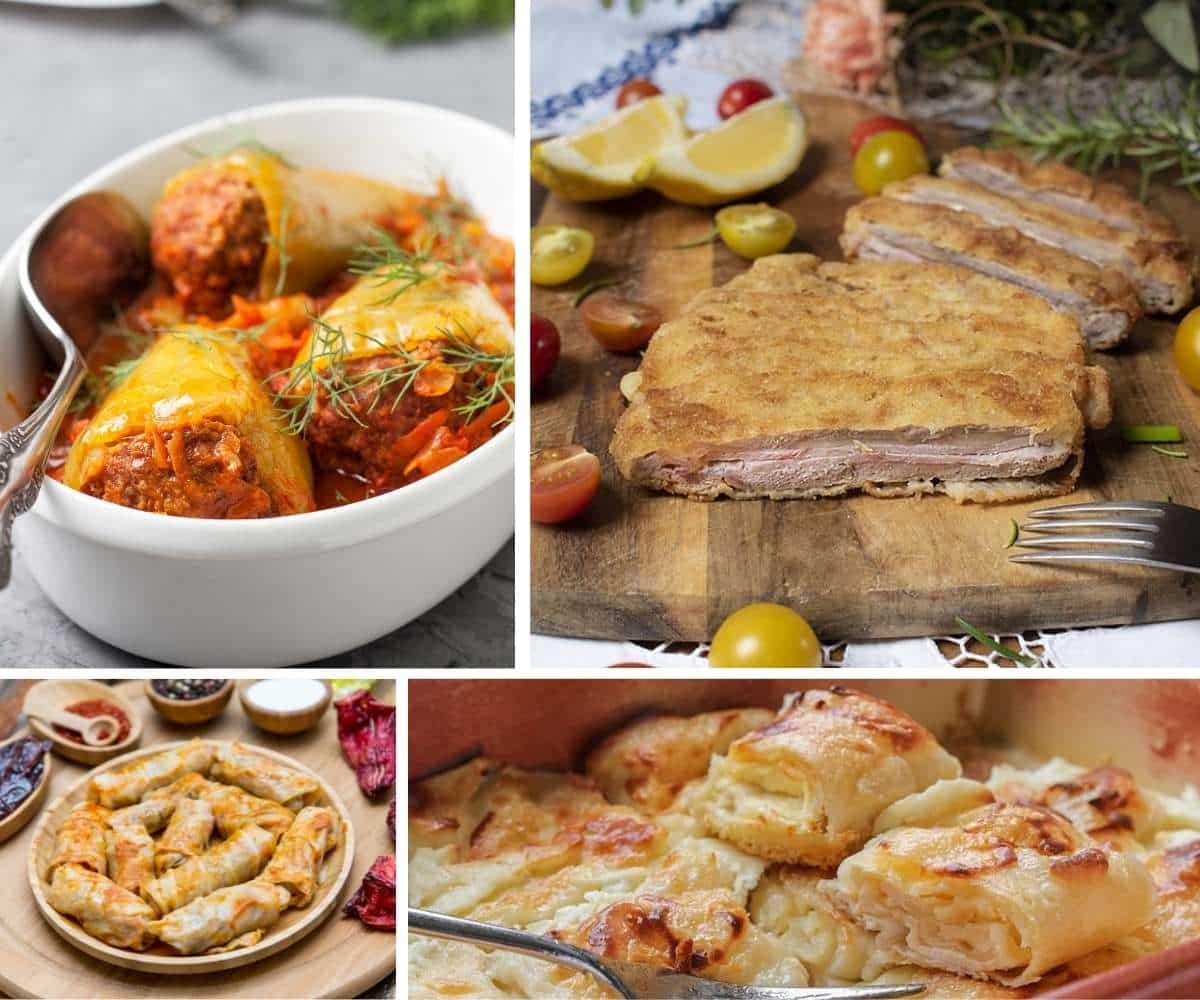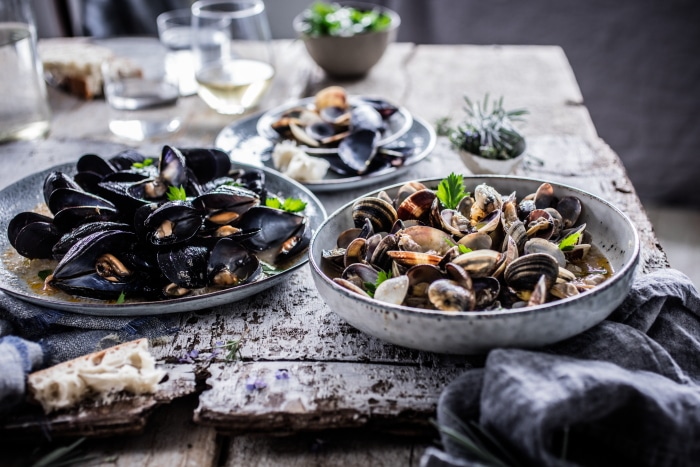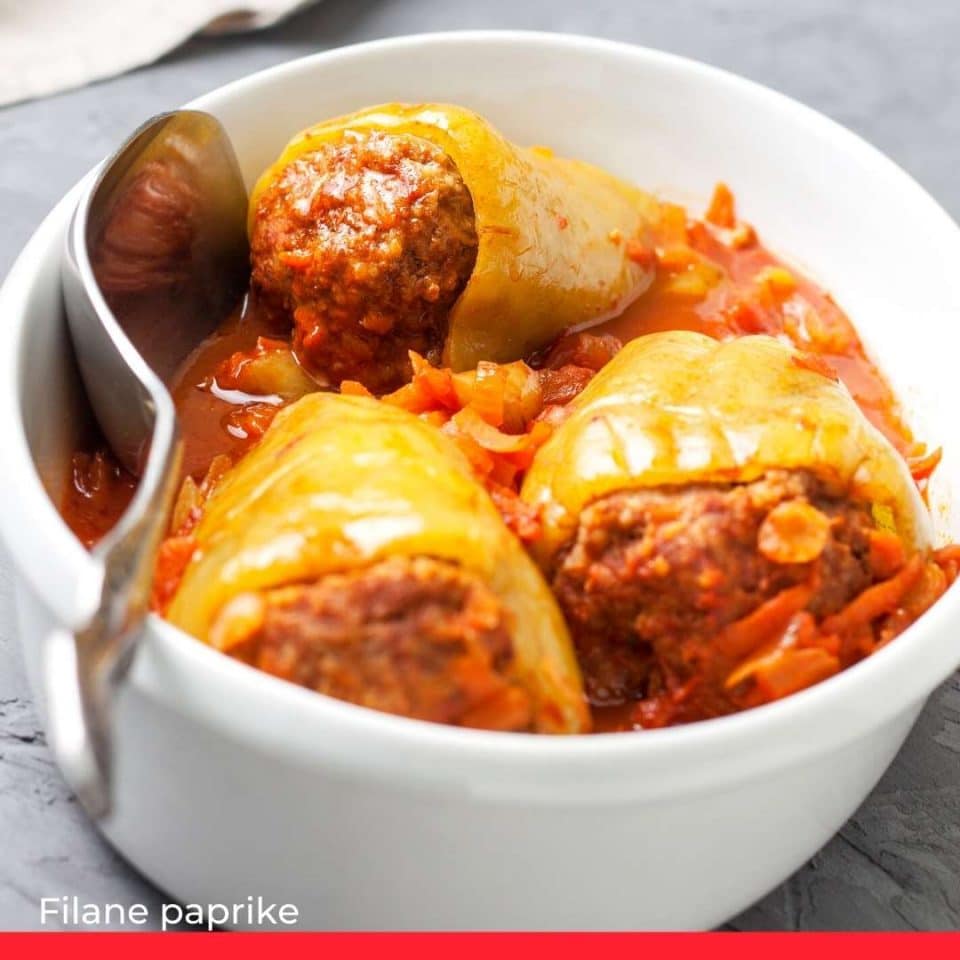12 Most Popular Croatian Foods

Traditional Croatian cuisine is rich and varied, and Croatian cookbooks are full of recipes characterized by the frugal and smart use of ingredients available to hard-working homemakers.
From Slavonia and Baranja, through Zagorje and Lika, Istria and Kvarner, all the way to Dalmatia and its hinterland, it isn’t easy to single out the specialties and autochthonous dishes that you must try, but these delicious Croatian dishes are worth starting with.
1. Zagrebački Šnicl (Zagreb Steak)

One of the most famous dishes from the cuisine of Zagreb, the capital of Croatia, is the Zagreb steak, which owes its popularity to a delicious combination of ingredients, textures, and flavors.
The Zagreb steak is actually a breaded veal steak stuffed with ham and melted cheese and is a more luxurious version of the famous Viennese dish Wiener Schnitzel.
Although today it is prepared from other types of meat, such as pork, turkey, or chicken, veal is considered the essential ingredient of this traditional recipe.
In restaurants, Zagreb steak is served with a slice of lemon because of the acidity, which goes well with breaded meat, and the most common accompaniments are fries or rizi-bizi, boiled rice with added peas.
2. Čobanac (Shepherd’s or Slavonian Meat Stew)

After a hard day in the field, pasture, or forest, nothing nourishes the body and soul better than a hot and spicy čobanac, a Slavonian stew prepared in a kettle or a large pot.
It is considered a dish from the Slavonian pastures and was prepared by shepherds as a filling and nutritious meal that would be slowly simmered over a fire for several hours.
Shepard’s stew usually includes several types of meat, of which pork and beef are traditional, and game or lamb can also be added if available.
One of this dish’s main characteristics is its fiery spiciness, for which dried hot peppers are added in addition to ground red pepper. Part of the charm of čobanac is the long preparation and the subsequent gathering, drinking, and laughing around the pot on an open fire, from which the smell of spices and fried meat emanate.
This is still done to this day for big social gatherings such as birthdays or traditional Slavonian weddings or holidays.
3. Dagnje na Buzaru (Mediterranean Mussel Stew)

This native Dalmatian seafood dish is widely known and widespread due to its exquisite taste. In order to discover the origin of the name buzar, it is necessary to go back in time.
On the Venetian galleys, the word buzara meant the kettle in which food was prepared for the crew, and due to the centuries-old intertwined history of Croatia and Venice, the name took root in Dalmatia. It has finally become considered one of the finest Croatian dishes and a staple Mediterranean food.
Along with Mediterranean mussels, shrimp or crabs can also be added to buzara, and it comes in a white variety (without tomatoes) and red (with tomatoes). It is served with pasta or polenta (boiled cornmeal with milk and butter, similar to grits).
This decadent dish is the epitome of hedonism, and I highly recommend eating the shrimp with your fingers. If you don’t get in a mess while eating buzara, you haven’t eaten it right.
4. Sarma (Stuffed Cabbage)

Sarma is one of the traditional Croatian winter dishes, presented to tourists as ‘what is eaten in Croatia’, although the dish’s origin can be found in Turkey.
Traditional continental sarma means minced meat, usually pork mixed with rice and wrapped in a cabbage leaf. It is served with the mandatory creamy mashed potatoes. It is a popular food throughout the Balkans.
It is also important to mention the Mediterranean dolma, which is a summer dish, unlike the Balkan or continental dolma. In Mediterranean dolma, the meat is wrapped in vine leaves, which are thinner and lighter than cabbage.
5. Filane Paprike (Stuffed Peppers)

Stuffed peppers are an authentic Croatian summer dish, equivalent to sarma in winter.
The working principle of sarma and stuffed pepper is almost the same: vegetables (peppers or cabbage) are filled with a mixture of minced meat and rice, the only difference being that the stuffed pepper is cooked in a tomato sauce and the taste is a bit milder.
It is served with mashed potatoes or fresh, crusty bread, just like sarma.
6. Fiš-paprikaš (Fish Stew)

A specialty of Slavonian and Baranja cuisine, spicy fiš-paprikaš rarely leaves anyone indifferent.
Fiš-paprikaš, popularly shortened to fiš, is prepared from at least two types of river fish and served with wide, homemade noodles. Along with the fish, the main ingredients that give it its distinctive red color are dried peppers (both sweet and hot) and wine.
The dish was brought to Croatia by immigrants from southern Germany and Hungary, which thoroughly explains its richness and the spiciness you can only extinguish with a glass of good wine.
7. Pašticada (Braised Beef in Prosseco)

This dish from Dalmatia, the most complex to prepare of all the dishes on this list, made of marinated stewed meat, is included in the List of Gastronomic Heritage of Croatia.
It is indispensable at Dalmatian weddings, and the method of preparation varies not only from city to city but also from household to household. Until a decade ago, pašticada was made exclusively with beef fillet, often with bacon and dried figs.
Today, as there is less and less quality beef, the meat for pašticada is mainly cut from the beef leg, and figs are often replaced with prunes and apples.
The meat is kept in a marinade of cloves, bacon, and vinegar all night, then it is baked with aromatics and cooked for hours in prosecco and fruit. It is served with homemade potato gnocchi or bread dumplings.
8. Tartufata s Pljukancima (Truffle Sauce with Spindle Pasta)

Small spindles, or pljukanci, are a favorite of Istrian pasta. The typical shape, plump in the middle and thinner at the ends, is obtained by rubbing between floured palms.
They are often eaten with tartufata, a mixture of button mushrooms, white Istrian truffles, and olive oil. Although people have tried to imitate the conditions in which it grows and even import the soil, the white truffle (Tuber Magnatum) grows only in Istria, Italy, and France, making it not only unique but also world-famous.
9. Janjetina na Ražnju (Spit-roasted Lamb)

December, January, and February are long-awaited months in Croatia because that’s the prime time for eating young spit-roasted lamb. Lamb from the islands of Pag, Cres, and Krk is especially praised.
Although spit-roasted lamb is fairly simple to make, masters who know how to roast lamb are especially respected in society and worthy of praise.
Everything is important – from the preparation to the spices. Lamb prepared on a spit should not dry out, but shouldn’t remain bloody around the bone. The choice of salt is also important, and some prefer to use rock salt, explaining that sea salt can be too moist and affect the texture of the roasted meat.
But the most important is the meat itself, and therefore, the rearing of the lamb and its nutrition drastically affect the taste of the meat, which is why the most prized lamb is one weighing 5 to 7 kilograms and fed on local herbs and grass.
10. Špek Fileki (Tripe)

Špek fileki, or tripe, is a dish that leaves no one indifferent. It has divided the world into passionate fans and radical abstainers, who won’t even taste it, and the first camp does not relent in persuading the second.
For the uninformed, špek fileki used to be a dish for the poor, but today you can find it in the finest restaurants. People often think the fillets are made from beef intestines, but they are actually sliced beef stomachs cooked until soft, aromatic, and exquisite.
11. Zagorski Štrukli (Cottage Cheese Rolls)

A traditional specialty of Croatian Zagorje, Zagorje štrukli or štruklji are prepared in every traditional household with ingredients that are readily available. To guard them as an autochthonous Croatian dish, the art of their preparation was protected by the Register of Intangible Cultural Heritage of the Republic of Croatia.
Štrukli can be prepared in two ways: by cooking or baking, and as a savory or sweet dish. Dough filled with cottage cheese is used in both methods, but while štrukla cooked in salted water can be covered in melted pork fat and sprinkled with fried breadcrumbs or served in a fragrant soup, the baked štrukla is additionally covered with cream before cooking.
Delicious štrukli will delight all generations, and whatever method of preparation you choose, you can’t go wrong!
12. Dalmatinski Pršut (Dalmatian Prosciutto)

Dalmatinski pršut is cured ham, protected by the designation of geographical origin, made from pork leg, salted with sea salt, smoked, and then dried in the Croatian wind, called bura, for at least a year. It can be eaten by itself, sliced thinly, and served with homemade bread, but it’s also great in meat dishes and works well with chicken and pork.
In a country as firmly tied to its traditions as Croatia, knowledge of traditional dishes allows us to follow the course of the culinary culture’s development and see modern European influences on its cuisine. Croatian cuisine is a must-try; it’s a melting pot of flavors and takes the most delicious from Italy and Greece to Hungary and Turkey, all in one hot, enticing, fragrant plate.
Related: Most Popular Croatian Desserts


